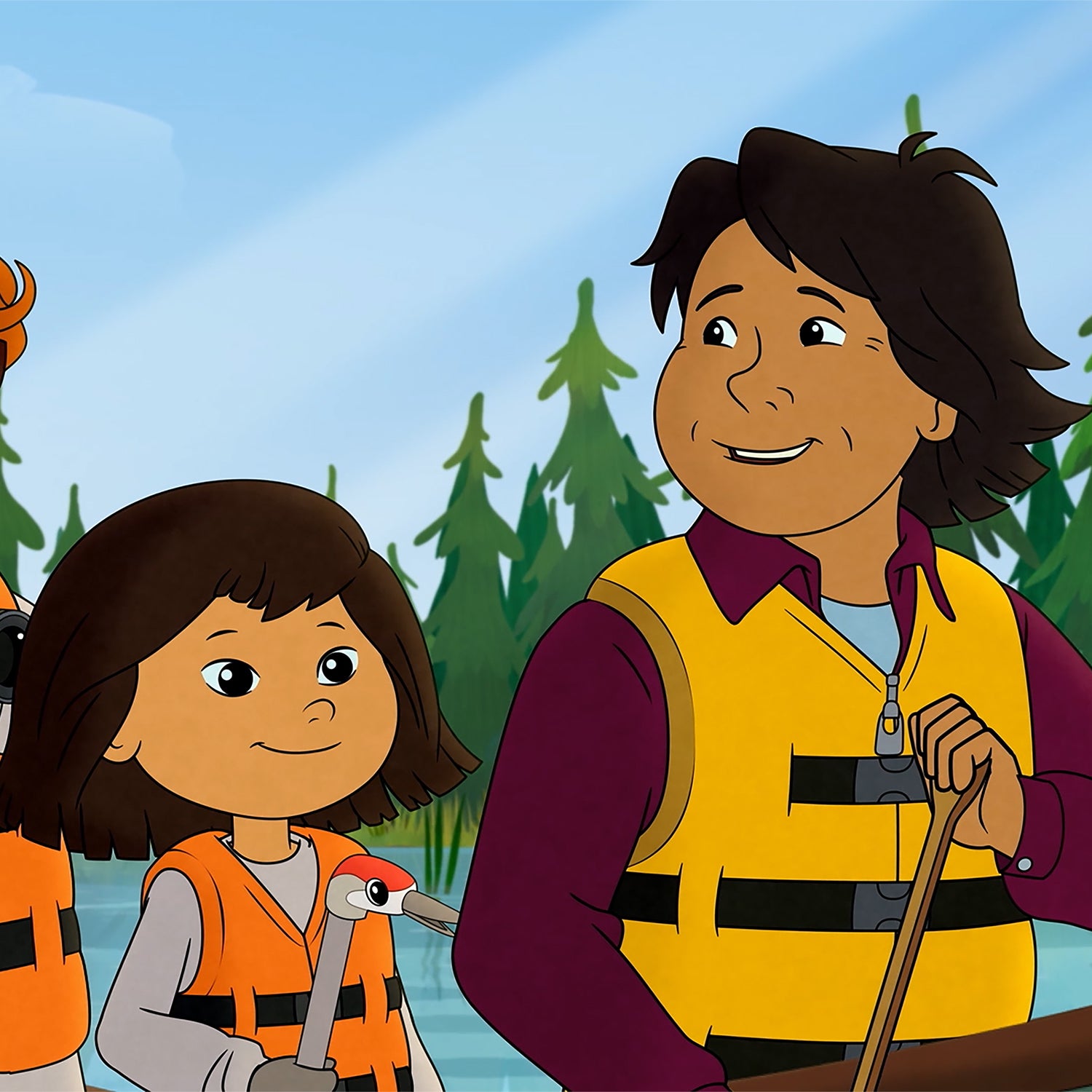This summer, I did something I never thought I’d do—I binge-watched a children’s TV show. Specifically, I watched 13 episodes of the new animated PBS show Molly of Denali, featuring a ten-year-old Athabascan girl with a bush pilot for a mother, a wilderness-guide dad, and a diverse cast of Alaskan friends and neighbors. It’s kind of like Dora the Explorer meets Northern Exposure, except that as the first show with an Alaska Native as its star, it’s in a category all its own.��
My favorite episode, “,”��stands out for how seamlessly it breaks down the stereotypes that often shadow indigenous characters. For one thing, Molly Mabray is no Disneyfied, buckskin-clad princess from the past: she’s a modern kid in jeans and sneakers who’s equally entranced by technology and her cultural heritage. When a wildlife biologist needs advice on how to band sandhill cranes, Molly pulls out a smartphone to video chat with her grandpa. This cleverly takes the narrative—where a heroic white person rescues people of color—and flips it on its head by having the Mabrays’��traditional knowledge help the struggling white��biologist collect data on the birds.
“It’s a marriage between Western scientific knowledge and our indigenous knowledge,” says Princess Daazhraii Johnson, a creative producer for the series, who wrote the “Crane Song” episode. “We need each other’s knowledge systems to find a path forward.” One of Daazhraii Johnson’s jobs is to make sure accurately represents Alaska Native values, language, and culture. Instead of having a token��Native consultant, Daazhraii Johnson—who is Neets’aii Gwich’in—tries to include indigenous people at every turn, from voicing the characters to writing scripts to helping with animation. The result is a show that gives young Native Americans an authentic��role model who looks like them, while introducing non-Native viewers to parts of Alaska’s environmental and cultural landscape that are rarely seen in the media.
I reached Daazhraii Johnson by phone at her home in Fairbanks, Alaska, to talk about how the show offers a new way of seeing the world.
OUTSIDE: How did you get involved with Molly of Denali?��
Daazhraii Johnson: At the end of 2016, WGBH [a Boston PBS affiliate]��made their initial visit to Alaska and released a job description for the creative-producer position. Three people e-mailed me and were like, “This is perfect for you.” My background in acting and writing and directing all geared me toward it, but so did my personal story of being an Alaska Native woman, growing up without ever seeing myself or people that looked like me represented in a positive light. Part of why we’ve had Native stereotypes is because we as Native people have not been involved in making these images, so I saw this as an amazing opportunity to try to break that old Hollywood model. It’s so significant to finally get representation, and the reaction around the country has been amazing.
I was just telling someone at my daughter’s day care here in southwest Colorado that I was interviewing a producer for Molly of Denali, and these two little girls��that overheard got so excited.
I am constantly hearing from people who love the show. I��was just on a trip to Santa Fe, and at our hotel pool there was a��nine-year-old Navajo and Pueblo girl who overheard that I worked on the show. She’d seen every episode, she was just such a fan. It’s kind of overwhelming, in a good way, to know that there’s such a hunger for Native stories and Native perspectives and our Native values.
You mentioned that you didn’t grow up seeing yourself, or people who looked like you, in TV or movies in a positive light. Why is it important for your children to have a show like Molly of Denali?��
Research has shown that negative depictions and racist mascots dehumanize us and result in low self-esteem in our youth. So being able to normalize and humanize us as modern indigenous people is important. For so long, we were relegated to the past. We are a modern-day people, and we need to be visible, we need to be able to share stories and talk about history from our lens. At the premiere in Fairbanks, we did an invitational drumming and singing on the stage, and my four-year-old and nine-year-old—who’s kind of shy—both joined us onstage, along with a bunch of non-Native kids, to share in our Athabascan dances. To me��it’s this way of saying that it’s OK��to be who you are, you should be proud of that. You can be proud of that.
Speaking of history, Molly of Denali addresses some pretty heavy issues for a kids’ show, like the “Grandpa’s Drum” episode, where Molly learns about and their role in cultural erasure. Why is it appropriate to cover those issues?
That’s such a real, living part of our history. And children are just little adults. They’re so perceptive.��A��lot of children want to know, like, why doesn’t grandpa or grandma speak our language? Our elder, Luke Titus [one of the show’s Native consultants], was like, “Once we tell our truth and true history, we gain healing and further compassion for one another, and then we get to create the new. Molly is a part of creating that new.”����
You’re an activist on��issues like climate change and drilling in the Arctic National Wildlife Refuge. Do you plan to��cover��environmental-justice issues in future episodes?
There is actually an episode coming up called “Not So Permafrost” that addresses the fact that our climate is warming. In that story, there’s a clubhouse that’s sunk into the ground because of thawing permafrost, and the community comes together to save it.��
We try to deliver truthful, factual information��but also give the sense that there are people working on solutions and that we can all be a part of them. As a mother, I’m bombarded daily with negative news about what’s happening in the world, especially around our changing climate, and it often feels catastrophic and kind of hopeless. I think it’s important for us to be honest with our children��but to also maintain a sense of hope. For me, Molly represents that hope. She represents the best world possible.


